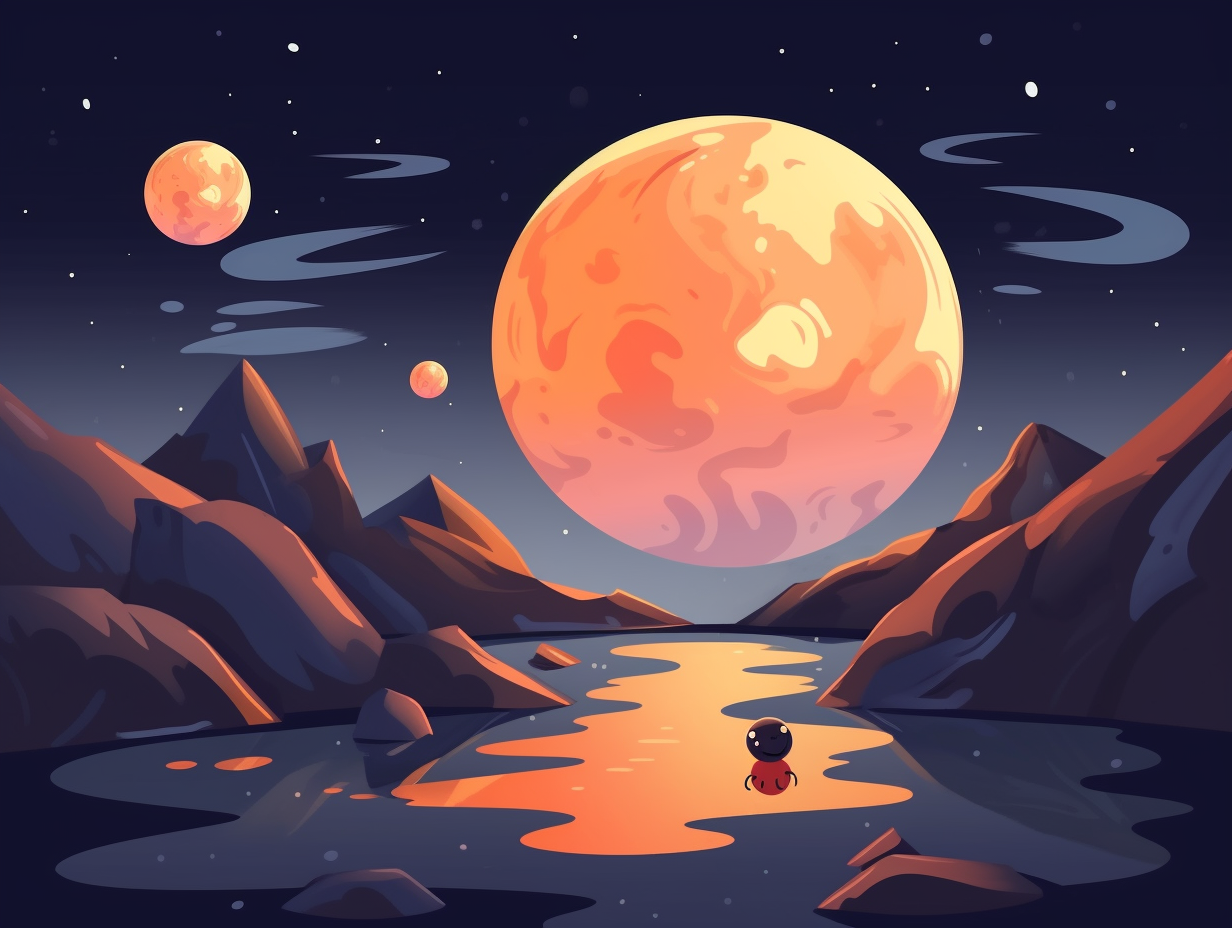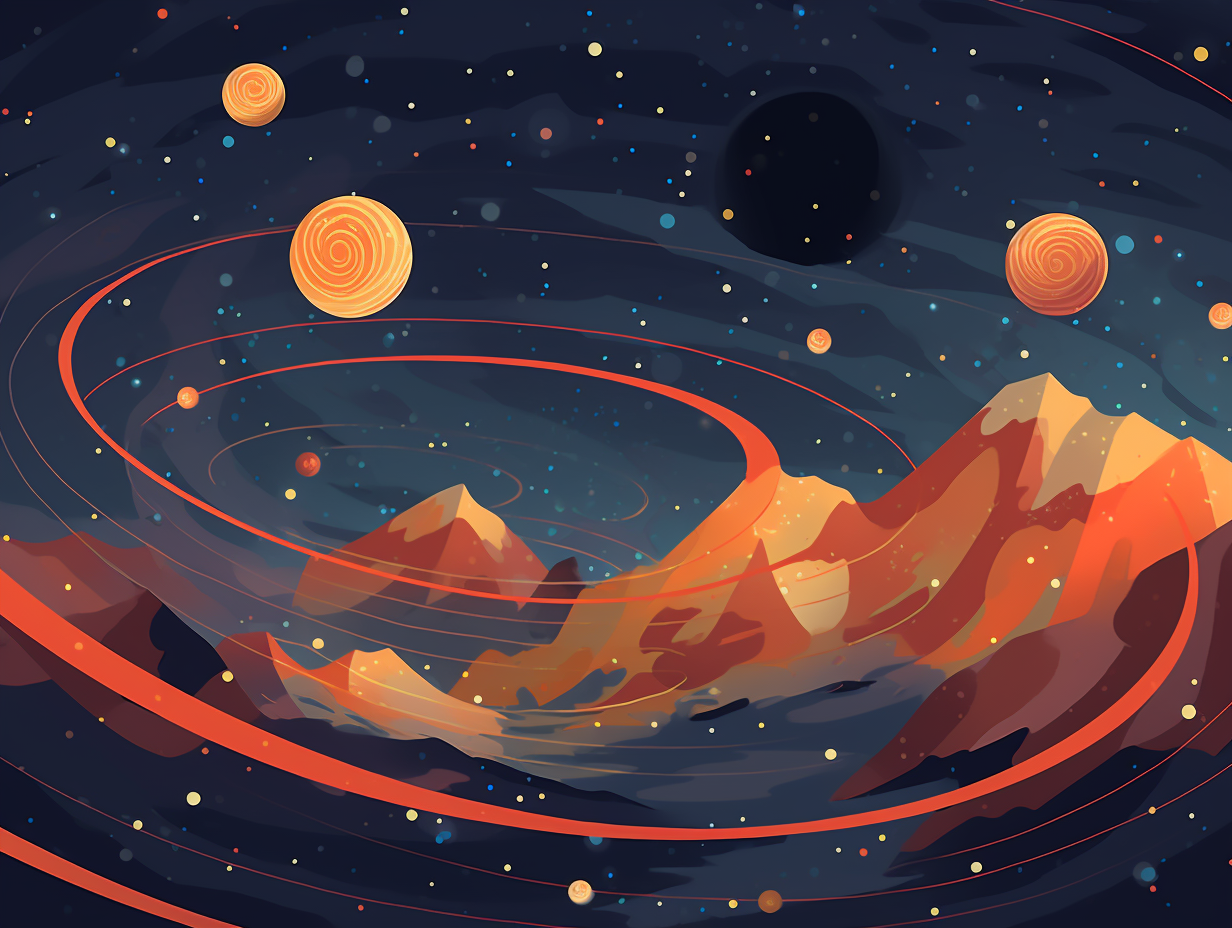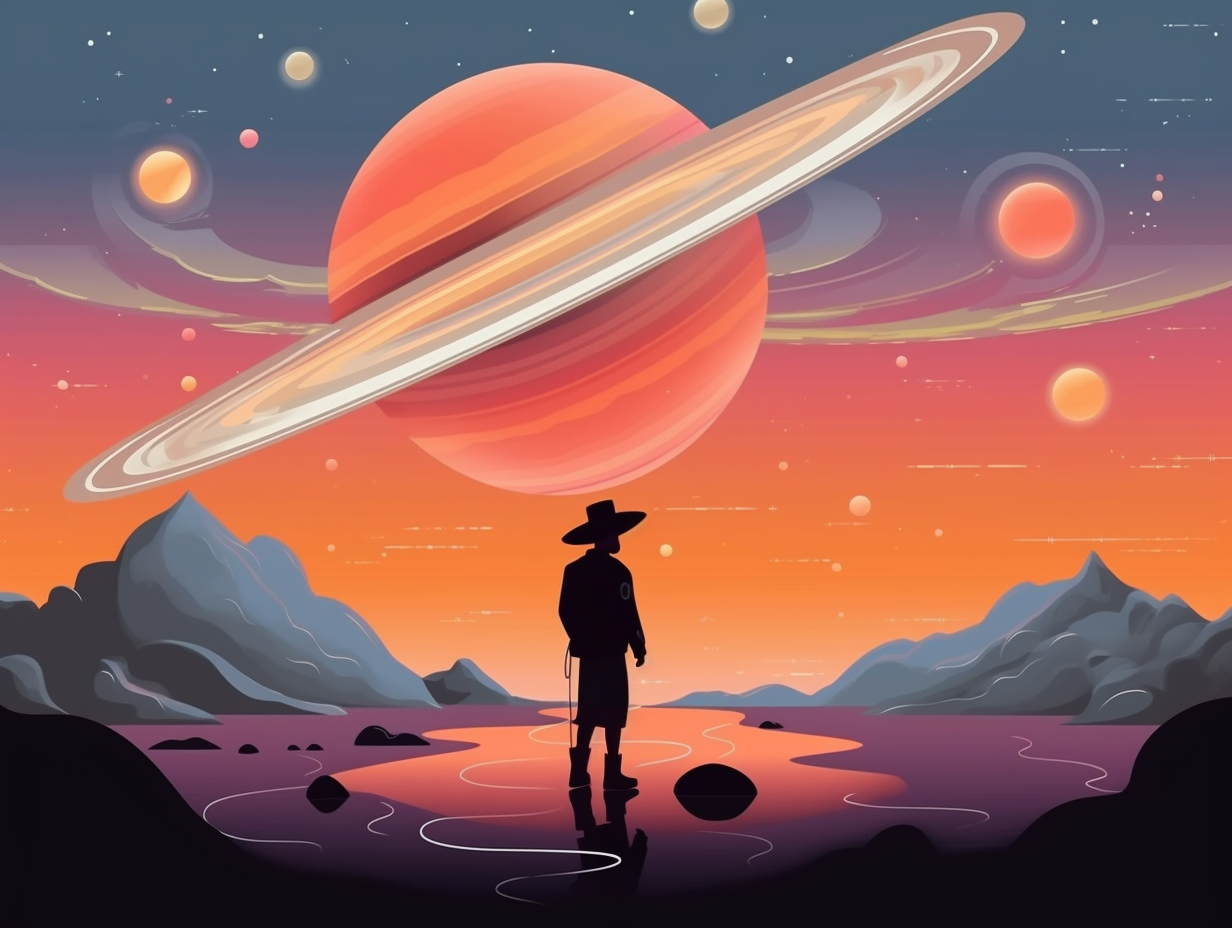Discover the Cosmos: Top 12 Fun and Fascinating Facts About the Kuiper Belt

1. Cosmic Hoedown in the Kuiper Belt
Imagine Neptune inviting everyone out beyond its orbit to a big ol' cosmic hoedown, partners and all: The Kuiper Belt actually boasts a diverse mix of heavenly folks including various sub-populations with unique orbits and properties, and at least 22 known celestial couples – or binaries – twirling around each other in this far-out celestial shindig.
Source => sciencedirect.com
2. Pluto's Love Note to Earthlings
Pluto went all-in on romance, carving a love note into its icy surface just for us earthlings to admire: This passionate celestial body flaunts a heart-shaped feature known as Tombaugh Regio, which is composed of nitrogen-rich material, potentially creating winds that influence the whimsical shapes and patterns gracing Pluto's surface.
Source => planetary.org

Discover the secret behind Pluto's heart-shaped feature, where a peculiar thermostat of frozen nitrogen creates intense winds and shapes its surface in mesmerizing patterns!
=> Fun Facts about Pluto
3. Cosmic Rouge: Fruity Kuiper Surprises
What do ripe pears and peaches have in common with the Kuiper Belt? They all boast a stunning shade of "cosmic rouge"! : Some Kuiper-belt objects are incredibly red, thanks to the presence of organic pigments similar to those found in fruit, hinting at the possible existence of biological activity beneath their icy surfaces.
Source => panspermia.org
4. Gerard Kuiper's Not-So-Tight Belt
Gerard Kuiper may have had the right idea, but it seems his "Belt" wasn't as tight as he thought: The Kuiper Belt out in the outer reaches of our solar system actually wasn't predicted by Gerard Kuiper himself, and it was only discovered in 1992 by astronomers David Jewitt and Jane Luu, who stumbled upon this cosmic treasure trove of ancient icy bodies while surveying the realm beyond Neptune!
Source => serious-science.org

5. The Kuiper Belt's Icy Rave
If the solar system held an ice-cold rave, it'd be at the Kuiper Belt's Icy Afterparty Extravaganza: a massive planetary hoedown composed of small, icy bodies known as Kuiper Belt Objects (KBOs), which differ from asteroids and comets in origin and makeup, as they're the forgotten relics of planetary materials pushed into their current orbits by cosmic shoves.
Source => space.com
6. Quirky Residents of the Kuiper Belt Motel
Whoever said "size doesn't matter" must have had a hunch about the dazzling dwarf planets residing in the "Kuiper Belt Motel": Turns out, pint-sized members like Pluto and Eris have exciting features of their own, such as moons and faint ring systems, shedding light on planetary formation and evolution in our solar system's far-flung suburbs.
Source => space.com
7. Cosmic Treasure Chest Beyond Neptune
The Kuiper Belt: it's like a cosmic treasure chest filled with frozen trinkets, icy knick-knacks, and chunky baubles galore, each one outdoing the others in size and quirky composition to claim the title of our solar system's most fashionable accessories. But in all seriousness: this vast region beyond Neptune's orbit is home to over 100,000 objects more than 62 miles in diameter, consisting primarily of frozen volatiles like methane and water, and including several distinguished dwarf planets such as Pluto and Haumea.
Source => en.wikipedia.org
8. Ice-Skating Extravaganza with Dwarf Planets
Gather 'round, folks, for a spectacular cosmic ice-skating extravaganza, starring an ensemble of oddballs like Orcus, Pluto, Haumea, Quaoar, and Makemake, performing gravity-defying leaps in a vast frozen arena: The Kuiper Belt is home to these enigmatic dwarf planets, mainly composed of frozen volatiles, with over 100,000 celestial objects, offering astronomers profound insights into our Solar System's formation and evolution.
Source => en.wikipedia.org
9. Arrokoth, the Peanut-Shaped Mystery Solver
Meet Arrokoth, the cosmic peanut doing its part to crack open the mysteries of the universe: This Kuiper Belt object has a unique flattened snowman shape, formed by two ancient planetesimals merging together, and provides invaluable insight into the early formation of our Solar System and the building blocks of planets, thanks to the data gathered by the New Horizons spacecraft.
Source => aaas.org

10. A 4-Billion-Year-Old Cosmic Dance
Ever heard of a cosmic dance performance that's been going on for over four billion years? Pluto and its pals have been doing the jitterbug around Neptune, and they've got rhythm down to a science: In the Kuiper Belt, there are resonant trans-Neptunian objects with orbits in simple integer relationships with Neptune's period, such as 1:2 or 2:3 – the most common type, known as "plutinos," has 383 confirmed members. These celestial conga lines originated during Neptune's migration in the early solar system and, thanks to their stable orbits, provide valuable insights into the dynamics of the outer solar system.
Source => en.wikipedia.org
11. The Neptune-Loving Plutinos
Meet the Plutinos, the ultimate planetary fan club: a group of celestial bodies that love Neptune so much, they decided to harmonize their orbits in a 2:3 mean motion resonance, just like the original fan – Pluto. These enthusiastic trans-Neptunian objects, including crowd favorites like Orcus, Ixion, Rhadamanthus, and Huya, make up a quarter of all known Kuiper Belt Objects (KBOs). Now that's what we call cosmic camaraderie!
Source => space.fandom.com
12. Scattered Life Lessons from the Kuiper Belt
Hey there, space enthusiasts! Ever feel like your life is a bit like the objects in the Kuiper Belt, scattered all over the place and experiencing strong gravitational interactions, aka your boss, your family, or Netflix series? Well, cosmic chaos does have its perks: The Kuiper Belt is a cosmic cocktail made up of classical KBOs with low inclinations, scattered disk objects jostled by Neptune's strong influence, and resonant KBOs captured into groovy orbital dances as Neptune migrated in the early solar system, giving us a diverse mix of astronomical wonders to ponder and enjoy. Cheers to that, space buddies!
Source => iopscience.iop.org
Related Fun Facts




















